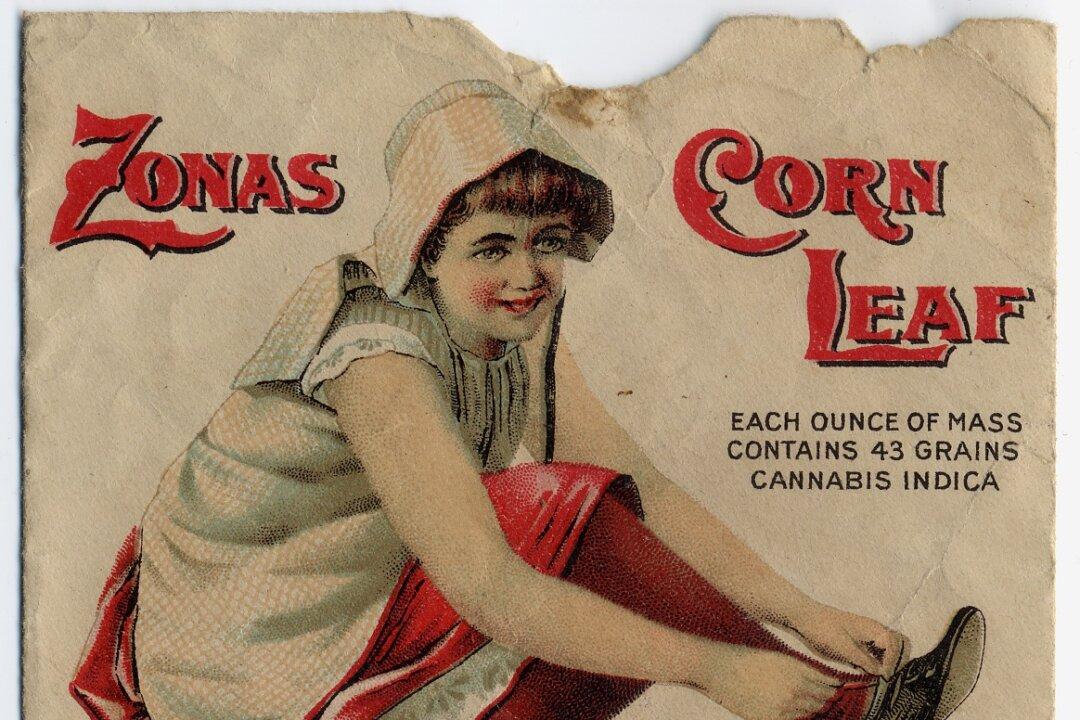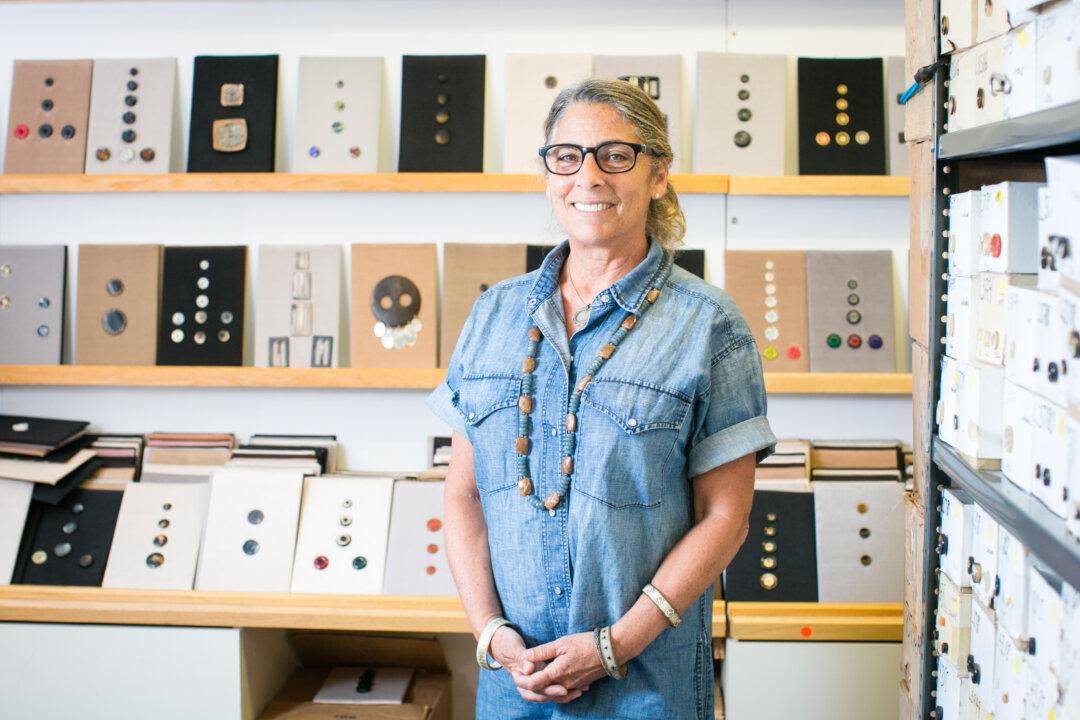Even trekking through the exquisite art-laden spaces of New York’s Metropolitan Museum of Art will not prepare one for the experience of coming face to face with the grand tapestries designed by Pieter Coecke van Aelst (1502–1550).
If his name doesn’t come to mind as easily as Raphael or da Vinci, it should. By the time Coecke was in his late 20s, he'd already mastered drawing and painting and had designed the tapestry series on the life of Saint Paul.
Throughout his working life, cut short at the age of only 48, Coecke moved with ease through many media: painting panels, drawing designs for stained glass, goldsmith’s work, prints, and publishing architectural handbooks. But his tapestry designs remain his most admired and coveted works.
The first major monographic exhibition devoted to this 16th-century Netherland artist, “Grand Design: Pieter Coecke van Aelst and Renaissance Tapestry,” explores his multifaceted career and great drive as an entrepreneur and visionary.
“He could have made a respectable living as a panel painter, but looking at his drawing we see that above all he is a designer,” said organizing curator for the exhibition, Elizabeth Cleland.
She explains that for designers the progression from painting to tapestry would be that the artist would create the petit patron, the small-scale work. This would then be handed to the cartoon painter to produce the full-scale paper model-cartoon, which would then be used by the weavers to create the final product.
Fragments Complete the Picture
As working tools, cartoons were used until they fell to pieces. For this reason there are very few surviving pieces. The fragments of Coecke’s original cartoons that are on display as part of the exhibition demonstrate the meticulous detail and lengths to which he went so that the finished work would be as close to a rendition of his concept as possible.
And according to Cleland, there is circumstantial evidence that Coecke was working very tightly with the weavers.
These few cartoon fragments, such as the man’s head from the “Story of Caesar: Reunion of Pompey and Cordelia,” the horse head from the “The Life of St. Paul,” reveal such dynamism and beauty that they were likely kept for that reason.
“When we look at his cartoons, they’re so good that we can see his hand in them,” explains Cleland.
It is then more than likely that the minuscule detail and refinement displayed in the tapestries designed by Coecke is owing to the artist’s close involvement in the process of production.
There are 19 epic tapestries on view in the exhibition, and each one is larger than life, bustling with historical as well as mythological characters set amidst ebullient vegetation and architectural elements.
From Minuscule to Grand
The attention to detail is staggering.
In “The Life of St. Paul: The Conversion of Saul” tapestry (circa 1529–1530), Saul is depicted as having fallen to the ground that is lit by heavenly rays, conveyed by diaphanous gold threads woven near Saul’s legs. Inches from them, a single stalk of a bluebell flower stands at the precarious intersection between the horse’s back hoofs and a tangled raspberry bush, complete with white flowers, luscious ripe fruit, as well as thorns.
During the Renaissance, nature was viewed as a reflection of the divine. The flower symbolism associated with bluebells is humility, constancy, and gratitude.
In all his works, from minute blades of grass to massive trees, Coecke’s natural motifs are pregnant with meaning and serve to echo the main theme.
Never content to stick to a set formula, Coecke was forever innovating in his quest to supersede and surprise.
Traditionally, tapestry borders were separate, kept in stock by that particular workshop. But with Coecke designs, the borders are used to reflect and enrich the story.
In another tapestry from the same series, on “The Life of St. Paul: Saint Paul directing the burning of the heathen books” (1529 or 1535), the books seem to tumble out of the confines of the scene as well as the border around it. Coecke punctuates the scene with a very animated border in which a little putto is pulling another putto out of the way so that he doesn’t get crushed by the tumbling books.
Coecke’s Perspective
Cleland mentions that whereas Raphael, whom Coecke greatly admired, diverts the eye so that it’s as if the perspective is going back, Coecke does more than that.
“With Raphael it’s all about making a whole in the wall,” she said, “but Coecke brings them forward, right into our space.”
In “The Seven Deadly Sins: Gluttony” (circa 1532), the old drunk is about to lurch off his donkey into our space, “and that is something that Raphael just wouldn’t do. So he’s looking at Raphael, but he is also doing his own thing,” said Cleland.
Coecke also did his own thing in the way that he was able to establish himself as a successful businessman. Based in Antwerp, he also worked in Brussels, just over 30 miles away. It is there that Coecke gained experience by working as a cartoon painter for Bernard van Orley, (circa 1492–1541/42) a leading designer of tapestry, stained glass painter, and draughtsman.
Networking in the 16th Century
Eventually, Coecke built up a network of the most successful Brussels weavers, and the dealers working in Antwerp who, according to Cleland, allowed him to produce the tapestries as a commercial venture, on speculation.
Given that it would take a master weaver approximately two months to weave one square yard of a top-quality tapestry and that four or five weavers would work on a tapestry simultaneously, this was no small venture. And the risk was great.
So Coecke and the weavers targeted the great rulers of the day who had the palaces large enough to display them. One had to have a palace to display all the pieces in the tapestry sets such as “The Seven Deadly Sins.”
The first work was owned by France’s Francois Ier, and it’s very unlikely that Francois Ier would approach an unknown artist to commission it.
It was not the old dynamic of an artist sitting, waiting for a great patron to approach them and commission the work. Instead, it is evident that once the first edition was complete, almost immediately a second edition was already being woven, “so it’s clearly the case that they’re getting these out as quickly as possible. There’s no one first important set,” said Cleland.
Coecke’s success spread far and wide. The collectors of the period included the Holy Roman Emperor Charles V, Henry VIII, and Cosimo de' Medici.
Five sets of “The Seven Deadly Sins” were woven, of which Cleland said that one was for Henry VIII, the second set was owned by Mary of Hungary who left it to her nephew Phillip II. Given that the third set was first owned by the Count of Egmont who was executed by the Habsburgs, Phillip II made sure that Egmont’s set was also delivered to him in Spain, even though he had already inherited his aunt’s set.
Notably by the fifth or sixth editions, the cartoons would have been well worn and would be sold. Not surprisingly, the resulting tapestries from those sold would have lacked the rich details of earlier sets.
The exhibition is unprecedented in scope and size. It is the first time that The Tisch Galleries had to be “deconstructed” so that the 19 tapestries could benefit from the ample space needed to admire their complexity and drama.
Walking into the galleries is like walking into the 16th century, not because the space has been decorated in that style, but because the sheer size of the tapestries command so much of one’s vision that as one gets closer to the work, everything else seems to disappear. And it is very easy to enter the world of Pieter Coecke van Aelst.
The re-entry into the here and now is rather jarring, by comparison. It means leaving the land of characters and creatures right at the point when their fates change irrevocably—a land that lives in color and thread.
The exhibition also includes seven of Coecke’s panel paintings, 36 drawings and prints, as well as woodcuts and books from Coecke’s great body of work.
“Grand Design: Pieter Coecke van Aelst and Renaissance Tapestry” will be on view until Jan. 11, 2015.





